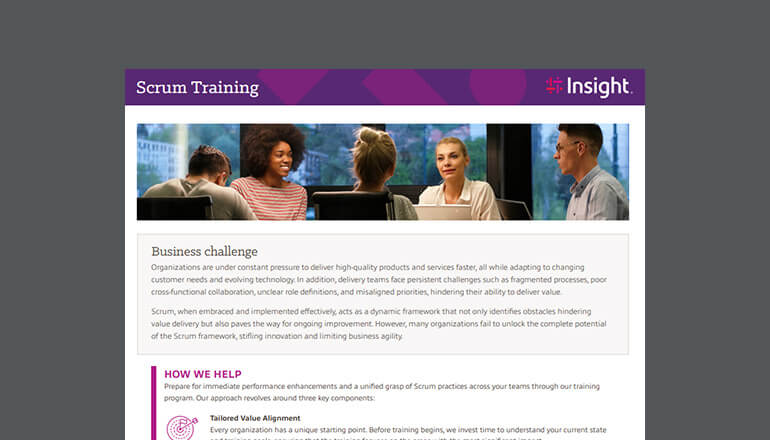Client story When an Outbreak Hit Missouri, This Healthcare Organization Responded
A care provider needed help improving its call center process so that it could deliver better patient care.
By Insight Editor / 29 May 2020 / Topics: Unified communications

Facts at a glance
Client industry:
Healthcare
Size of company:
44,000+ employees
Challenge:
As a result of a nation-wide virus outbreak, the client needed a better solution to provide triage to an influx of inbound callers, with the ability to collect and prioritize information.
Solution:
Cisco Unified Contact Center Enterprise
Results:
- Streamlined method for risk prioritization
- 3,000+ evaluations conducted daily
- Improved patient experience & workplace efficiency
Solution area:
Insight’s Connected Workforce solutions are a suite of end-user compute offerings designed to simplify IT management while improving connectivity and collaboration.
A regional healthcare system in the Midwest aspires to deliver quality care to all of its patients through in-person and virtual consultations. The organization offers a broad range of services, from primary care and cancer treatment, to screening tests and emergency response teams.
When the novel coronavirus began to spread throughout the state, the providers found themselves facing an influx of inbound calls regarding public safety concerns, testing opportunities, treatment options and virtual care sessions. Although the organization had set up a free online screening tool to help ease the burden on its staff, it found that calls were still its primary source of patient contact.
The team needed a better technique to provide triage to inbound callers so that its members could collect patient information upfront and categorize cases according to severity and specialization.
Improving the calling process
Having been a long-time contact center client for Insight, the provider reached out to our Connected Workforce team for a consultation. In the past, we helped the client deploy Cisco Unified Contact Center Enterprise which supplemented call routing and management for their call centers. With a multiyear support model that recently ended, the client was ready for an update.
Our team built upon the existing framework to improve upon its benefits without disrupting current processes. Cisco Unified Contact Center Enterprise and Customer Voice Portal provided our team the platform required to rapidly respond to our client’s need in a time of crisis. Using these tools, we provided a rapid and flexible solution that gathered and responded to relevant patient information, provided comprehensive reporting and streamlined follow-up calls. Working with the client’s staff, we integrated seamlessly with ServiceNow to deliver greater organizational visibility.
Putting the patient first
As a result, the healthcare organization is now able to process callers by their symptoms and base treatment scheduling on this data in accordance to risk factor. Regardless of the risk level outcome, the output of each selection is still saved in ServiceNow so the request can always be referred back to, followed up on and monitored.
The state continued to manage an increase of cases concerning the outbreak, in addition to the everyday emergencies and appointments.
However, the provider can now conduct more than 3,000 evaluations daily — and with confidence. Callers are no longer left on hold for long periods of time, patients in critical condition can receive immediate care as needed and those looking for comfort during these times of uncertainty can receive factual updates from a team of experts 24/7.



